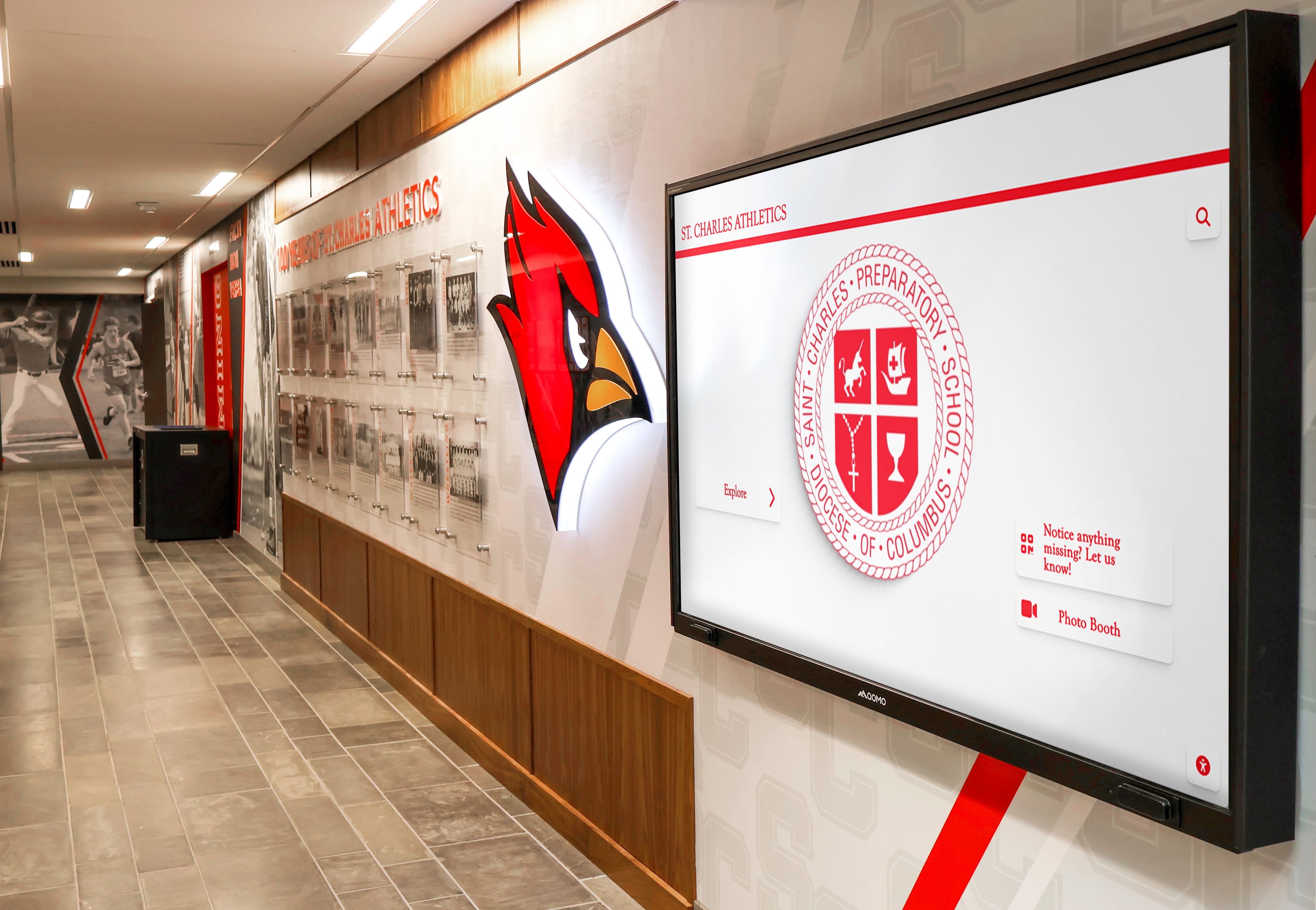Championship teams represent the pinnacle of athletic excellence—the culmination of countless hours of practice, unwavering dedication, strategic coaching, and exceptional teamwork. When teams achieve championship status, they create defining moments that become part of institutional legacy, inspiring future generations while bringing pride to entire communities. Yet many schools struggle to showcase these achievements effectively, with championship banners fading in forgotten storage rooms and trophy cases overflowing beyond capacity.
Modern schools face a critical question: How do we properly honor championship teams in ways that preserve their legacy, inspire current athletes, and create lasting recognition that reflects the magnitude of their accomplishments? Traditional recognition methods often fall short, limited by physical space constraints, static presentation formats, and inability to tell complete championship stories that capture the journey from season start to final victory.
This comprehensive guide explores proven strategies for showcasing championship teams through modern digital recognition technology. Whether you’re celebrating recent title victories or preserving decades of championship history, understanding how to effectively showcase team excellence creates recognition experiences that honor achievements while building lasting program culture.
Why Championship Team Recognition Matters
Before examining specific showcase strategies, it’s essential to understand the compelling reasons why comprehensive championship recognition deserves prioritized investment and attention from athletic departments and school administrators.
Preserving Championship Legacy for Future Generations
Championships represent rare accomplishments requiring exceptional alignment of talent, coaching, circumstance, and execution. Most programs experience championship success infrequently, making each title victory a precious moment worthy of permanent preservation.
Legacy Preservation Benefits:
Championship recognition creates institutional memory that outlasts the participants directly involved. Twenty years after graduation, championship team members can return to campus and see their accomplishments properly honored, reconnecting with memories and reinforcing lifelong bonds with their alma mater. Current students discover championship teams from decades past, learning about program history and understanding they’re part of legacy extending across generations.
Without proper preservation, championship stories fade as participants age, media coverage becomes inaccessible, and institutional knowledge dissipates. Systematic championship recognition prevents this cultural amnesia by creating permanent documentation that survives personnel changes and generational transitions.

Inspiring Current Athletes Through Championship Examples
Championship recognition serves powerful motivational purposes for current athletes who see tangible evidence that exceptional achievement is possible within their own programs. When student-athletes walk past championship displays daily, they internalize that championships represent realistic aspirations rather than impossible dreams.
Motivational Impact Elements:
Concrete Goal Visualization: Detailed championship recognition helps athletes visualize what championship success looks like specifically within their program context. They see teammates who achieved titles, understand circumstances surrounding victories, and recognize that championship teams consisted of real students facing similar challenges they experience today.
Cultural Expectation Setting: Programs with rich championship histories displayed prominently establish cultural expectations that excellence represents the standard rather than the exception. This normalization of championship pursuit influences athlete mindset, creating self-fulfilling prophecies where high expectations drive elevated performance.
Strategic Learning Opportunities: Comprehensive championship displays providing details about winning seasons offer strategic learning opportunities. Current athletes and coaches can study what made championship teams successful, examining roster compositions, season progressions, and approaches that delivered title victories.
For insights on building comprehensive athletic recognition programs that inspire current athletes, explore proven strategies from successful programs.
Strengthening Recruitment and Program Reputation
Championship recognition significantly impacts athletic recruitment by providing tangible evidence of program excellence to prospective student-athletes and their families evaluating multiple school options.
Recruitment Enhancement Through Championship Recognition:
Credibility Demonstration: When prospects visit campus and encounter extensive championship recognition, it validates program quality claims made during recruitment conversations. Visual evidence proves that programs consistently compete at high levels and deliver championship opportunities to participants.
Championship Culture Messaging: Comprehensive championship displays communicate program culture and values to prospects. Recognition showcasing not just victories but also team culture, academic achievement, and character development demonstrates holistic program excellence extending beyond wins and losses.
Competitive Differentiation: In competitive recruitment landscapes, impressive championship recognition differentiates programs from competitors. Schools showcasing championship excellence through modern, engaging displays create stronger impressions than competitors relying on outdated recognition approaches or lacking comprehensive displays entirely.
Building Community Pride and Support
Championship teams unite communities, creating shared pride that strengthens institutional support and community engagement. Effective recognition amplifies these benefits by keeping championship achievements visible and celebrated long after championship seasons conclude.
Alumni Engagement: Championship recognition creates natural touchpoints for alumni engagement. Former athletes revisit displays featuring their teams, share memories with current students, and maintain connections with programs. Alumni who feel their championship contributions are properly honored demonstrate stronger loyalty and support throughout their lifetimes.
Community Investment: Local communities take pride in school championship success, viewing athletic achievements as sources of community identity. Recognition displays accessible to community members during events strengthen these connections while demonstrating institutional appreciation for community support.

Essential Elements of Effective Championship Team Displays
Creating recognition that properly honors championship teams requires incorporating specific elements that tell complete stories while creating engaging, memorable experiences for viewers.
Comprehensive Team Information and Context
Effective championship displays provide rich context helping viewers understand championship significance beyond simple “champion” designations.
Critical Information Components:
Championship Details and Classification: Specify exact championship type (conference, district, regional, state, national), competition level and classification, championship date and location, and tournament progression or playoff path to title. This specificity helps viewers understand championship scope and accomplishment magnitude.
Season Record and Statistics: Document complete season records including regular season and playoff performance, key statistical achievements, notable victories over ranked opponents, and comparison to program historical benchmarks. Comprehensive statistics provide evidence supporting championship worthiness.
Roster and Participant Recognition: List all team members including starters and reserves, coaching staff and assistants, support personnel such as trainers and managers, and administrative contributors. Complete rosters ensure all participants receive proper recognition for their championship contributions.
Championship Journey Narrative: Provide narrative context describing the season arc, challenges overcome during championship pursuit, defining moments or turning point games, and what made this particular championship team special or memorable.
Understanding how to create engaging digital recognition content helps schools develop compelling championship narratives that resonate with diverse audiences.
High-Quality Visual Documentation
Visual elements create emotional connections that text alone cannot achieve, making photography and multimedia content essential for effective championship recognition.
Visual Content Requirements:
Team Photography: Include high-resolution team photos capturing championship squads in formal posed settings and candid celebration moments. Team photos put human faces to championships, helping viewers connect with actual individuals who achieved excellence.
Action Photography: Incorporate dynamic action shots from championship games or competitions showing athletes performing at peak levels. Action photography brings championships to life by illustrating the athletic excellence that produced victories.
Trophy and Award Documentation: Photograph championship trophies, medals, and banners from multiple angles with proper lighting. Physical championship artifacts carry symbolic significance that reinforces achievement legitimacy.
Championship Moment Captures: Preserve images from championship-clinching moments including final plays, victory celebrations, trophy presentations, and post-championship ceremonies. These emotional captures become iconic representations of championship experiences.
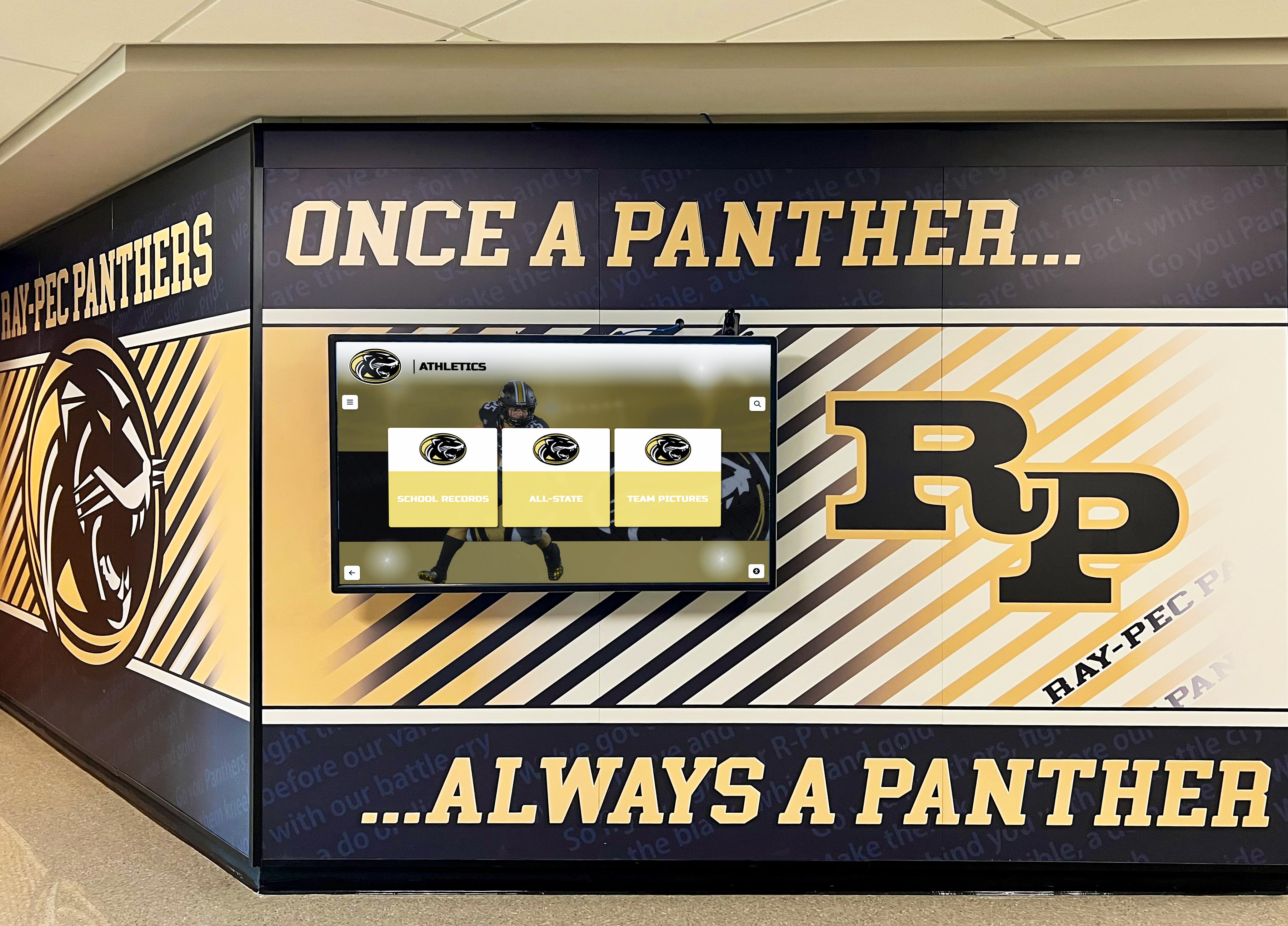
Multimedia Storytelling Through Video and Audio
Digital recognition technology enables multimedia content that dramatically enhances championship storytelling beyond what static displays can achieve.
Multimedia Enhancement Options:
Championship Game Highlights: Include video highlights from championship-clinching performances showing key plays, crucial moments, and victory-securing sequences. Video footage brings championships to life for viewers who didn’t experience games firsthand while allowing championship participants to relive defining moments.
Coach and Athlete Interviews: Record interviews with coaches and key athletes reflecting on championship seasons, discussing what made teams special, sharing memorable moments, and offering advice to current athletes. Personal testimonials add depth and authenticity that enrich championship stories.
Season Recap Videos: Create season-long highlight compilations showing championship team development from early season through final victory. Season arcs demonstrate that championships result from sustained excellence rather than single-game performances.
Audio Commentary and Description: Incorporate audio elements such as championship game radio calls, crowd noise from championship venues, or narrated descriptions for visitors preferring audio content. Multi-sensory experiences increase engagement and accessibility.
For schools exploring digital trophy display solutions with multimedia capabilities, modern platforms make rich content integration straightforward even for non-technical staff.
Interactive Exploration and Search Capabilities
Modern digital recognition systems enable interactive engagement allowing viewers to actively explore championship content based on personal interests rather than consuming predetermined information sequences.
Interactive Features That Enhance Engagement:
Search by Multiple Criteria: Enable searching by athlete names to find all championships involving specific individuals, sport or activity to explore championships within programs, year or decade to examine specific time periods, and championship type to compare different competition levels.
Filtering and Sorting Options: Provide filtering by sport, year, championship level, or custom tags, and sorting by chronological order, championship significance, or most recent additions. Flexible organization helps diverse audiences find content matching their interests.
Related Content Connections: Link championship teams to individual athlete profiles, coaching histories, facility improvements, and related championships across sports or years. Contextual connections encourage exploration beyond initial search queries.
Social Sharing Capabilities: Allow viewers to share championship content through social media, email, or text messaging. Sharing functionality extends recognition reach beyond physical display locations while helping alumni reconnect around shared championship experiences.
Modern Technology for Showcasing Championship Teams
Traditional championship recognition methods—banners hung from gymnasium rafters, trophy cases in school lobbies, plaques mounted on hallway walls—served programs adequately for decades. However, these approaches face fundamental limitations in dynamic athletic environments where championships accumulate across multiple sports and years.
Digital Interactive Recognition Displays
Digital recognition technology transforms championship showcasing by combining unlimited capacity with engaging presentation formats and simplified content management.
Digital Display Technology Advantages:
Unlimited Championship Capacity: A single digital display can showcase hundreds or thousands of championship teams across all sports and decades without physical space constraints. Schools never face difficult decisions about which championships deserve display space—every championship receives comprehensive recognition regardless of when it occurred or which sport achieved it.
Dynamic Content Updates: Add new championship recognition immediately after title victories without physical modifications, construction, or installation work. Update existing championship content as new information becomes available or participants achieve additional accomplishments. Digital platforms make championship recognition perpetually current rather than frozen at installation time.
Rich Multimedia Integration: Incorporate photos, videos, audio clips, statistics, narratives, and interactive elements that create engaging experiences impossible with traditional static displays. Multimedia capabilities enable complete championship storytelling that captures not just what teams accomplished but how they achieved excellence and what made championship experiences meaningful.
Simplified Management: Cloud-based content management systems allow athletic directors and administrative staff to update championship content from any internet-connected device without technical expertise or physical access to display hardware. User-friendly interfaces make content updates straightforward tasks requiring minutes rather than hours.
Solutions like Rocket Alumni Solutions provide comprehensive platforms specifically designed for educational athletic recognition, offering intuitive interfaces that non-technical staff manage confidently while delivering professional results that properly honor championship excellence.
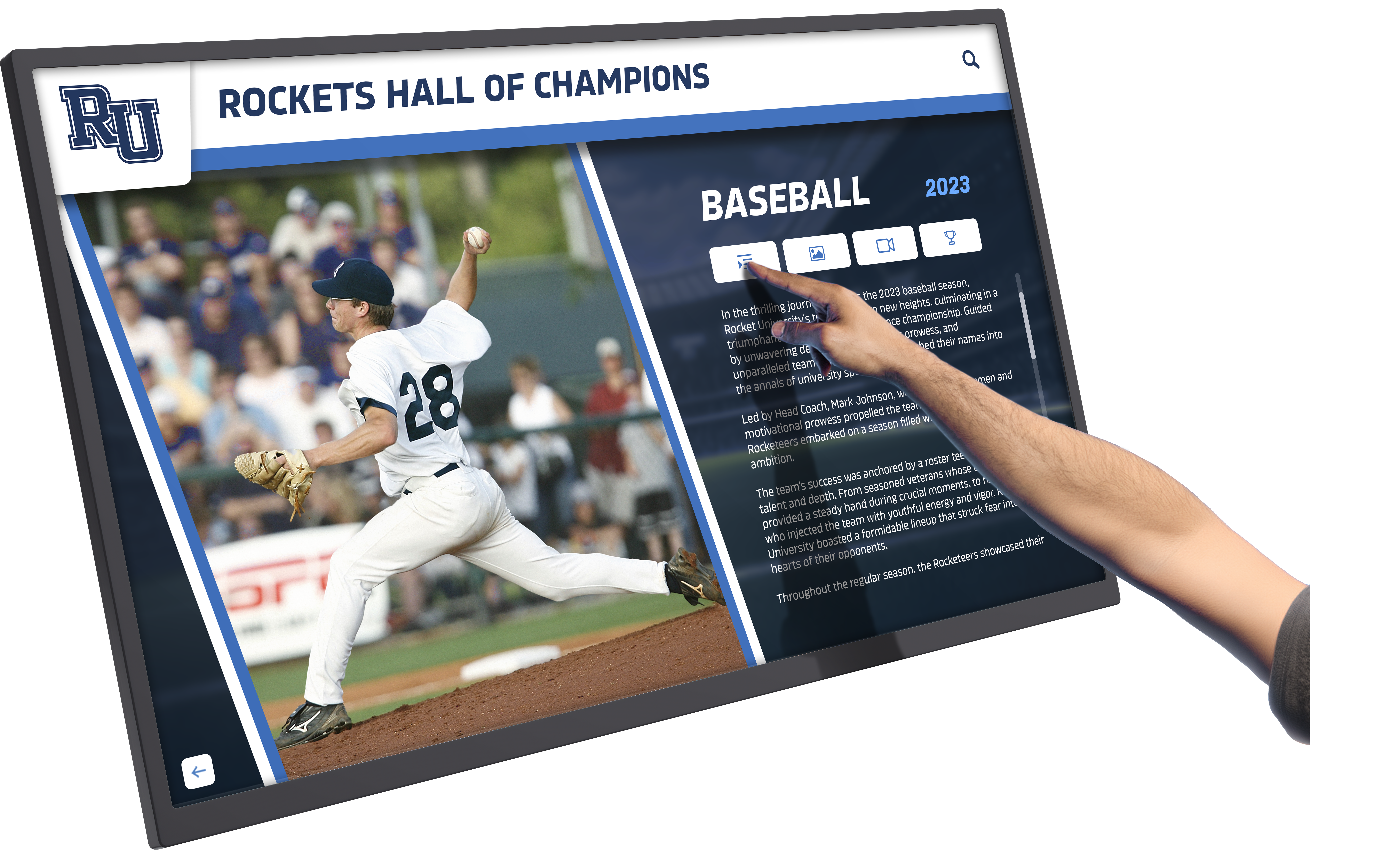
Strategic Display Placement for Maximum Impact
Where championship recognition displays are located significantly influences their effectiveness in achieving motivational, recruitment, and cultural objectives.
High-Impact Display Locations:
Athletic Facility Main Entrances: Position primary championship displays in athletic facility lobbies where all athletes, coaches, visitors, and community members entering facilities encounter championship recognition immediately. Entrance locations maximize exposure while demonstrating institutional pride in athletic excellence.
Locker Room Areas: Install displays visible to athletes during daily preparation and post-competition periods. Regular exposure creates psychological impact, constantly reminding athletes they’re part of programs with championship traditions and inspiring them to add their own contributions to legacy.
Stadium and Arena Concourses: Place displays in competition venue gathering areas where game-day crowds experience heightened emotions and school spirit. Championship recognition encountered during these emotional peaks creates strong associations between current teams and program championship traditions.
School Main Buildings: Position displays in main academic building lobbies, not exclusively in athletic facilities. Broader placement demonstrates that championship excellence matters to entire school communities while ensuring students not involved in athletics recognize program accomplishments.
Recruitment and Tour Routes: Ensure championship displays are located along standard campus tour routes used during prospective student visits. Strategic placement guarantees athletic recruits encounter compelling championship recognition during campus evaluations.
Mobile and Web-Based Championship Recognition
Physical displays provide important on-campus recognition, but extending championship showcases to digital platforms dramatically expands reach and accessibility.
Digital Platform Extensions:
Web-Based Championship Archives: Create comprehensive online championship databases accessible globally through school athletic websites. Web platforms allow alumni anywhere to explore championship history, revisit teams they participated in, and share memories with fellow championship team members regardless of geographic location.
Mobile Companion Applications: Develop mobile apps extending championship recognition beyond fixed display locations. Mobile access enables users to explore championship content during campus visits, share discoveries with family and friends, and revisit content after leaving campus.
Social Media Integration: Share championship content through school social media channels on championship anniversaries, during current championship pursuits, or when featuring historical program excellence. Social distribution amplifies recognition reach while generating engagement from alumni and community supporters.
Virtual Tour Integration: Incorporate championship recognition into virtual campus tours used by prospective students and families who cannot visit in person. Virtual access ensures championship excellence factors into college decision-making even when physical campus visits are impractical.
Implementing Championship Recognition Programs
Schools ready to enhance championship team recognition should follow systematic implementation approaches ensuring comprehensive coverage, consistent quality, and sustainable operations.
Conducting Championship Inventory and Research
Begin by thoroughly documenting all championships achieved across program history, gathering information and assets needed for comprehensive recognition.
Inventory Process:
Comprehensive Championship Documentation: Research school archives, athletic department records, yearbooks, newspaper archives, and alumni testimonials to identify all championships achieved throughout institutional history. Create master spreadsheets documenting championship year, sport, type, participants, coaches, and any available statistics or narrative details.
Information Gap Identification: Determine where championship documentation is incomplete or missing. Prioritize filling gaps for recent championships where information should be readily available while accepting that some historical championship details may be irretrievable.
Alumni Outreach for Historical Content: Contact championship team alumni requesting photos, stories, statistics, and memorabilia they may have preserved. Many championship participants maintain personal archives that significantly enrich official school records.
Digitization of Physical Materials: Scan championship photos, newspaper clippings, programs, and documents existing only in physical formats. Professional digitization services ensure historical materials are preserved digitally while maintaining archival quality standards.
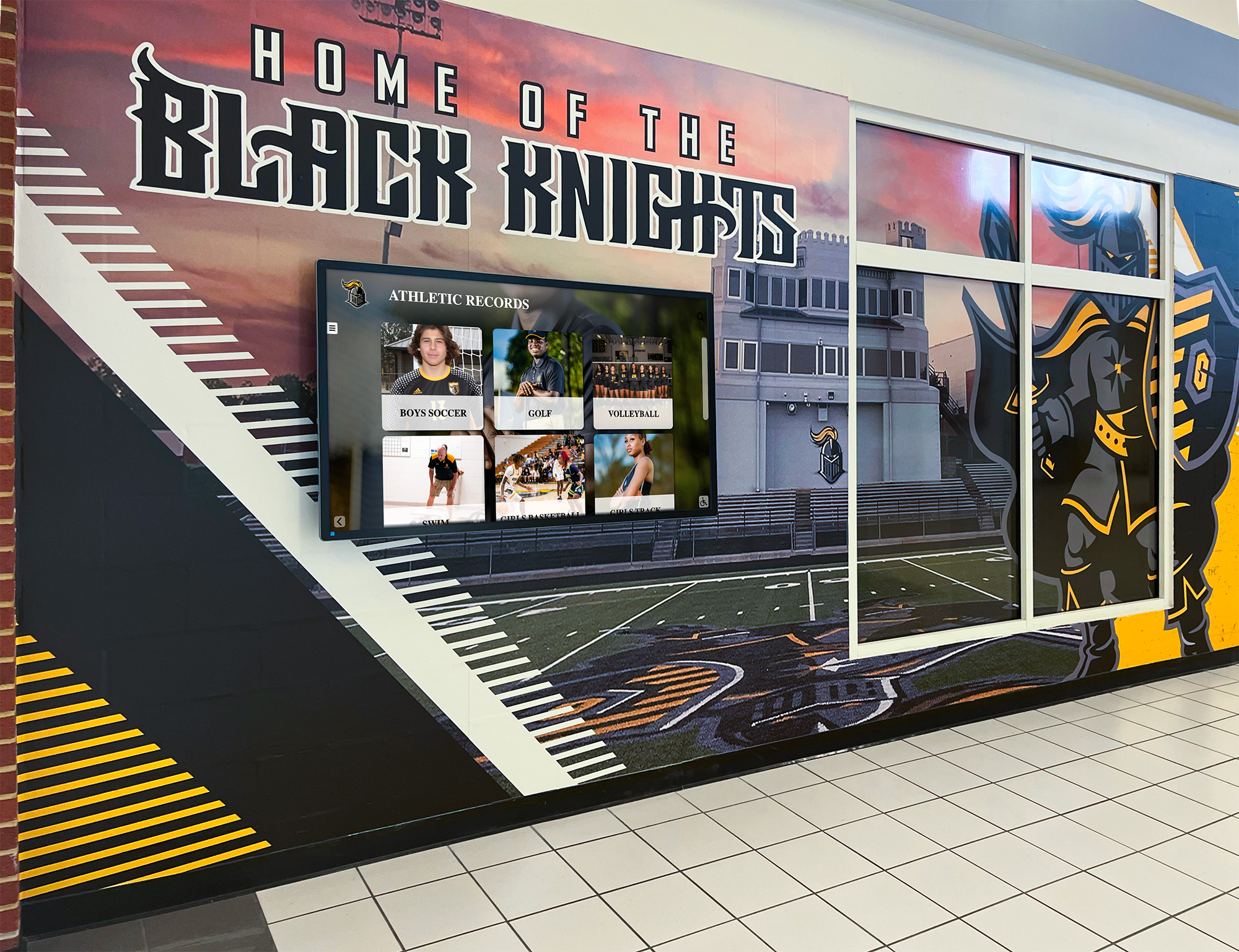
Establishing Content Standards and Guidelines
Consistent quality across all championship recognition ensures professional presentation while demonstrating equal respect for all championship achievements regardless of sport or era.
Content Standard Development:
Photography Specifications: Establish minimum resolution requirements (typically 1920x1080 for featured content), consistent composition and framing approaches, standard background treatments and color grading, and clear team identification and captioning. Uniform photography creates cohesive visual experiences across decades of championship content.
Information Architecture: Define standard data structures for championship entries including required fields (sport, year, championship type, roster, record), optional enhanced fields (statistics, narratives, multimedia), and consistent terminology and naming conventions. Structured data enables powerful search and filtering capabilities.
Narrative Voice and Tone: Establish writing guidelines ensuring championship narratives use consistent voice, maintain appropriate tone balancing celebration with accuracy, avoid hyperbole or excessive superlatives, and remain accessible to diverse audiences including students, alumni, and community members.
Quality Control Processes: Implement review procedures ensuring factual accuracy verification, consistent application of style guidelines, comprehensive coverage without obvious gaps, and professional presentation quality. Quality control prevents incremental degradation over time as multiple staff members contribute content.
Creating Phased Implementation Timeline
Most schools implement championship recognition incrementally rather than attempting comprehensive coverage before initial launch.
Recommended Implementation Phases:
Phase 1: Recent Championships (Years 1-5) Begin with championships from the past five years where information is readily available and current students remember championship teams. Initial content should provide sufficient depth for meaningful displays while keeping implementation timelines achievable.
Phase 2: Major Historical Championships (5-20 Years) Expand to historically significant championships from past decades including state titles, undefeated seasons, and championships that shaped program identity. This phase adds historical context while honoring teams that established program foundations.
Phase 3: Complete Historical Documentation Systematically work backward through program history documenting all championships. Complete coverage may require years of incremental effort, particularly for long-established programs with extensive championship traditions.
Phase 4: Enhanced Content Development Return to existing championship entries adding multimedia enhancements, expanded narratives, alumni testimonials, and additional photography as resources allow. Continuous enhancement keeps content fresh and engaging.
Phased approaches allow earlier launches demonstrating value while distributing content development workloads over extended periods making large projects manageable.
Ongoing Content Management and Updates
Championship recognition programs require sustained attention ensuring current championships receive timely recognition while historical content remains accurate and engaging.
Sustainable Operations:
Real-Time Championship Addition: Establish workflows for adding new championship recognition within 48-72 hours of title victories. Immediate recognition maximizes impact by honoring achievements while excitement remains high and community attention is focused on championship success.
Anniversary Recognition: Mark championship anniversaries by featuring historical teams, updating alumni accomplishments, and facilitating reunion opportunities. Anniversary recognition creates ongoing engagement with championship content beyond initial entry.
Continuous Quality Enhancement: Schedule periodic content audits checking factual accuracy, updating broken links or unavailable media, enhancing entries with newly discovered materials, and improving content based on user feedback and analytics.
Staff Training and Succession: Document content management procedures ensuring sustainable operations despite staff turnover. Train multiple personnel on update procedures rather than concentrating knowledge with single individuals whose departure could disrupt operations.
For comprehensive guidance on managing digital recognition content efficiently, explore proven workflows that maintain quality while minimizing administrative burden.
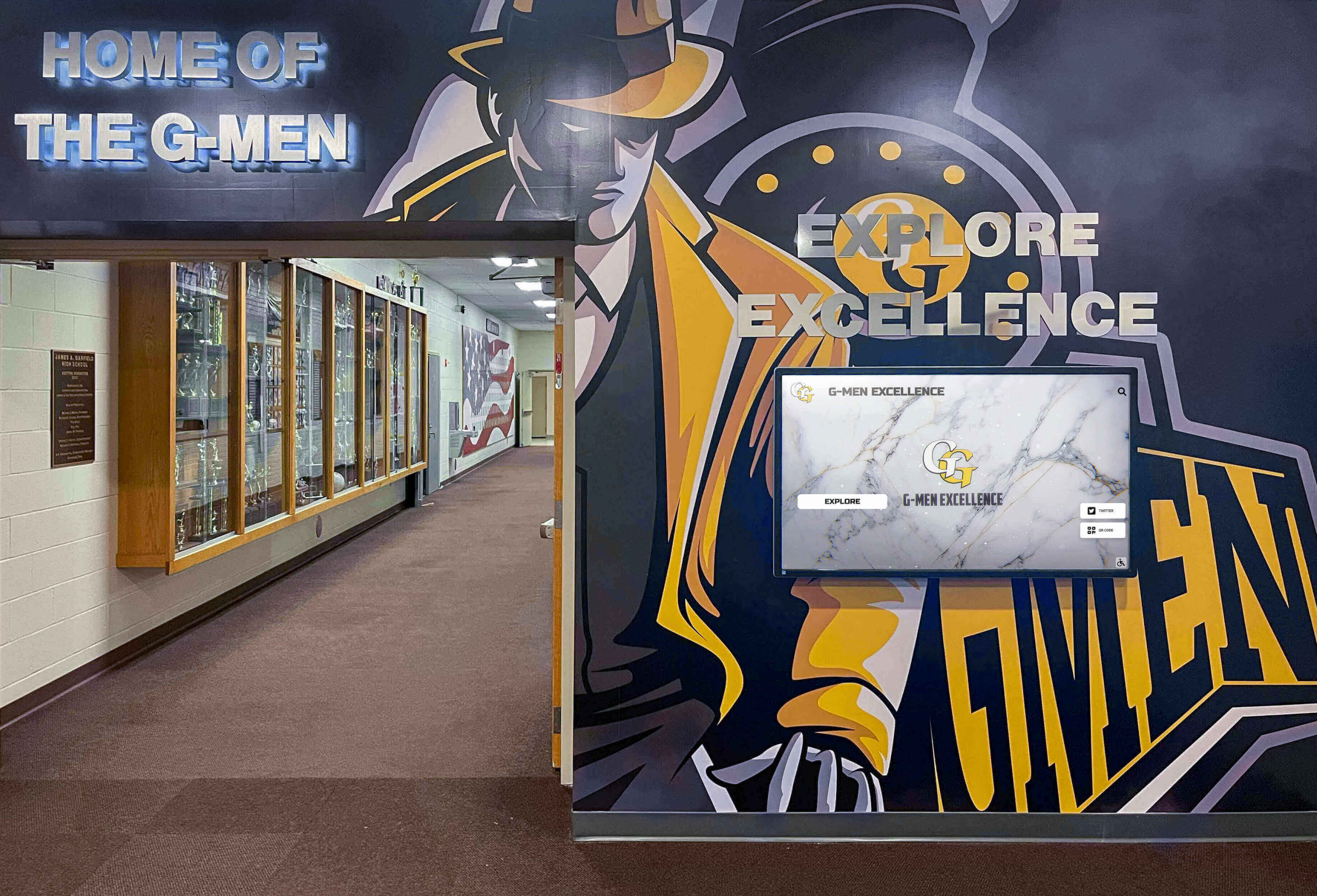
Best Practices for Championship Team Recognition
Schools achieving greatest success with championship recognition implement proven approaches that maximize impact while maintaining authenticity and equity across all programs.
Comprehensive Multi-Sport Coverage
Championship recognition should encompass all sports and activities competing for championships rather than favoring traditionally prominent programs.
Equity Principles:
Equal Recognition Standards: Apply consistent recognition standards across all sports regardless of program size, community profile, or historical success. State championships in smaller sports deserve equal display quality and content depth as titles in high-profile programs.
Proportional Representation: Ensure championship displays reflect full athletic department scope. If displays feature only football and basketball championships while ignoring titles in tennis, golf, or swimming, recognition programs send problematic messages about which achievements truly matter.
Non-Traditional Sport Inclusion: Include championships from activities sometimes overlooked in traditional athletic recognition such as cheerleading, dance team, robotics competitions, or academic contests. Comprehensive recognition demonstrates institutional commitment to excellence across all competitive domains.
Consistent Update Cycles: Maintain equal timeliness adding championships across all sports. Delayed recognition for certain programs while others receive immediate attention creates perceptions of favoritism undermining recognition program credibility.
Balancing Team Recognition with Individual Acknowledgment
Championship teams succeed through collective effort, but individual contributions also deserve appropriate recognition within team contexts.
Individual-Team Balance:
Highlight team captains and their leadership contributions, recognize individual statistical leaders and award winners, acknowledge coaching excellence that guided championship success, and identify breakthrough performers whose growth enabled team improvement. Individual recognition should always connect personal achievements to team success rather than treating them as separate accomplishments.
Authentic Storytelling That Honors Championship Journey
The most compelling championship recognition tells authentic stories capturing what made championship teams special beyond simply documenting that they won titles.
Storytelling Elements:
Challenge and Adversity: Describe obstacles championship teams overcame including injuries to key players, early season struggles before finding identity, challenging schedules preparing teams for championship competition, and doubts from external observers that teams proved wrong.
Defining Moments: Identify specific games, plays, or season turning points that shaped championship pursuits. Memorable moments make championships memorable by providing narrative anchors that capture season essence.
Team Culture and Chemistry: Explore intangible factors contributing to championship success including team unity and cohesion, leadership from players and coaches, work ethic and preparation commitment, and mental toughness under pressure. Cultural elements often distinguish championship teams from talented teams that fall short.
Legacy and Impact: Discuss championship impact on programs, schools, and communities. Describe how championships influenced future teams, shaped program trajectories, or created community memories that endure decades later.
Exploring effective digital hall of fame storytelling approaches helps schools create compelling championship narratives that engage diverse audiences.
Accessible Design for All Viewers
Championship recognition should be accessible to all community members regardless of physical abilities, technical literacy, or background knowledge.
Accessibility Considerations:
Display mounting heights accommodating wheelchair users and shorter viewers, text sizing and contrast meeting readability standards, alternative text descriptions for visual content supporting screen readers, intuitive navigation requiring minimal instruction, and multilingual content when serving diverse communities. Inclusive design ensures entire communities can engage with championship recognition rather than limiting access to specific audiences.
Measuring Championship Recognition Program Impact
Athletic directors and administrators must demonstrate recognition program value to justify continued investment and optimize effectiveness.
Quantitative Performance Metrics
Track specific metrics connecting championship recognition to desired outcomes:
Participation and Recruitment: Monitor year-over-year participation numbers across sports, quality of athletic recruits as measured by prior accomplishments, and recruit feedback about campus visit impressions. Improvements in participation and recruitment quality suggest recognition programs effectively communicate program excellence.
Alumni Engagement: Measure alumni participation in athletic events, response rates to alumni communications, contributions to athletic fundraising campaigns, and social media engagement with championship content. Increased engagement indicates recognition successfully maintains alumni connections.
Community Awareness: Track local media coverage of athletic programs, social media reach and engagement, attendance at athletic events, and community perception surveys. Growing awareness suggests championship recognition effectively communicates program excellence beyond school boundaries.
Qualitative Feedback and Testimonials
Numbers provide important measures, but qualitative feedback offers deeper understanding of how championship recognition influences stakeholder experiences.
Feedback Collection Methods:
Survey current athletes about how championship displays influence their motivation and program pride, gather recruit and parent impressions during campus visits, collect championship team alumni perspectives on recognition quality, and request community member feedback about championship awareness. Qualitative insights guide program refinements that quantitative metrics alone cannot reveal.
Conclusion: Championship Teams Deserve Exceptional Recognition
Championship teams achieve rare excellence requiring extraordinary talent, dedication, coaching, and teamwork. These accomplishments deserve recognition that matches achievement magnitude while preserving legacy for future generations. Traditional recognition approaches increasingly fall short, limited by physical space constraints, static presentation formats, and inability to tell complete championship stories that capture the journey from season start to ultimate victory.
Modern digital recognition technology transforms championship showcasing by providing unlimited capacity, multimedia storytelling capabilities, interactive engagement features, and simplified management that makes comprehensive recognition practical even for schools with extensive championship traditions. Schools implementing comprehensive championship recognition programs honor past excellence while inspiring current athletes, strengthening recruitment, and building lasting program culture.
The most successful championship recognition programs demonstrate several key characteristics: comprehensive coverage across all sports and decades, consistent quality standards ensuring professional presentation, authentic storytelling that captures what made championships special, accessible design serving diverse audiences, and sustainable management maintaining currency and engagement.
Schools ready to properly honor championship excellence should consider modern digital recognition solutions specifically designed for educational athletic programs. Solutions like Rocket Alumni Solutions provide comprehensive platforms combining intuitive technology, professional support, and proven best practices—making it straightforward to create championship recognition that delivers lasting value while properly honoring the remarkable achievements these teams represent.
Championship teams leave legacies extending far beyond their competitive seasons. Proper recognition ensures these legacies endure, inspire, and contribute to program excellence for decades to come. When schools invest in showcasing championship teams effectively, they honor past achievement while building foundations for future success.
